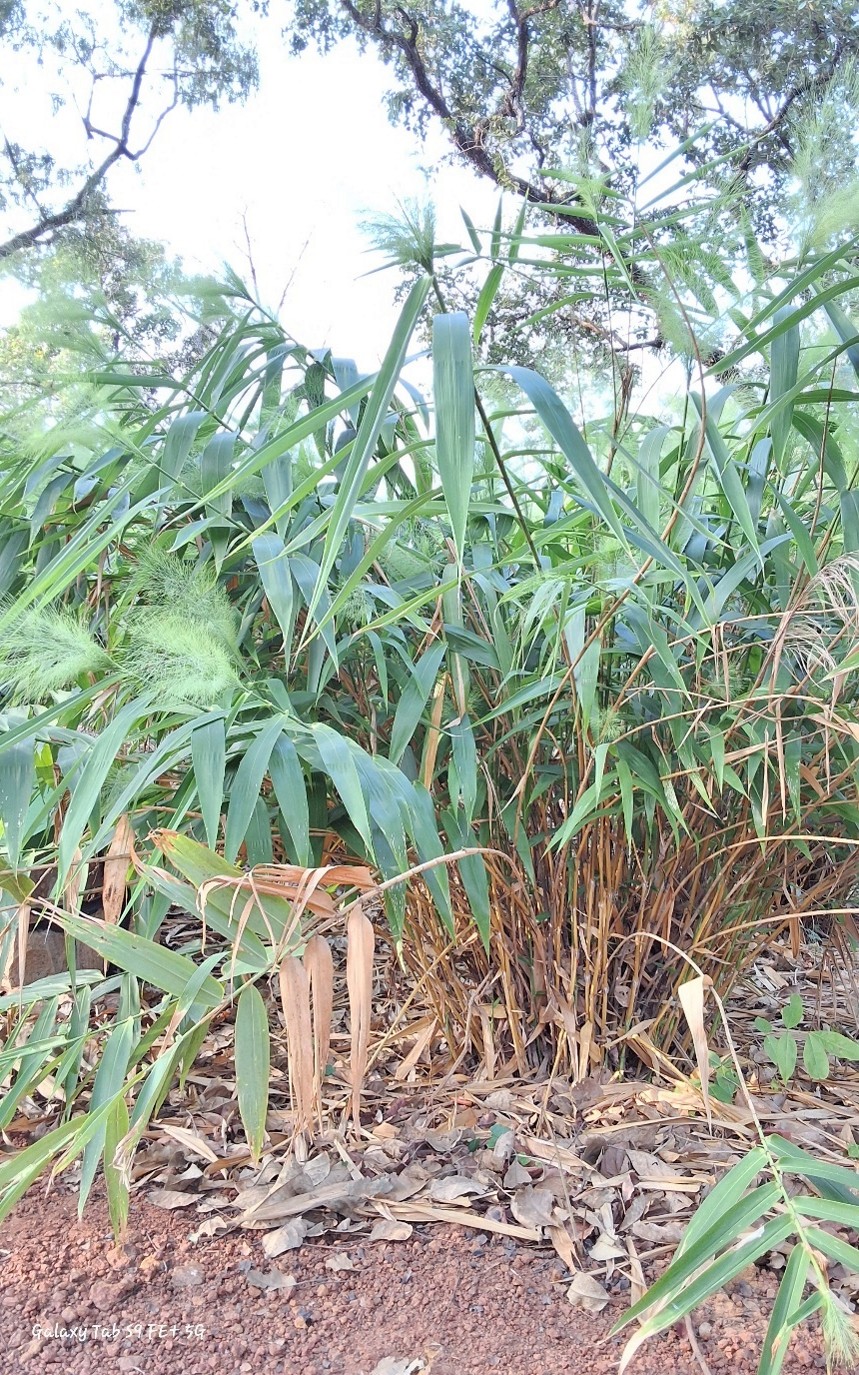Thyrsostachys maxima,

Thyrsostachys maxima,
also known as Giant Thai Bamboo or Bai Tong Yai (ใบตองใหญ่) in Thai, is a clumping bamboo species native to Southeast Asia, particularly in Thailand, Laos, and Cambodia. It has been introduced to other parts of Southeast Asia for both ornamental and commercial purposes.
This bamboo species features large, dense clumps with several stems emerging from a single rhizome. The culms grow up to 15-20 meters in height, with a diameter ranging from 6 to 10 cm. The culm color is initially green, turning to a yellowish-brown as it matures. The internodes are long, ranging from 25 to 45 cm, and the culm sheaths are green when young, turning brownish as they mature. The adaxial surface of the sheaths is smooth and glabrous, while the abaxial surface is slightly hairy with sparse fine hairs. The margins are ciliate.
The leaves of Thyrsostachys maxima are elliptic to lanceolate in shape, tapering to a point, with a length of 20 to 30 cm and a breadth of 4 to 7 cm. The leaf texture is thin with smooth edges and a slightly waxy surface. The leaf color is dark green on the upper surface and pale green on the underside. The leaves are alternately arranged, providing long and dense foliage that offers excellent visual appeal and shade.
This species grows well at altitudes between 200 and 1,500 meters above sea level. It prefers rich, well-drained soils with a neutral to slightly acidic pH, but it can tolerate a wide range of soil types, including loam, sandy loam, and clay soils.
The inflorescence of Thyrsostachys maxima consists of a large, loose panicle that spreads out, with many small flowers arranged in clusters along the branches. The flowering glumes are small and inconspicuous, with a pale greenish hue. The plant has 3 stamens with long, slender filaments. Flowering is infrequent, occurring once every 15-20 years, and the plant produces small, light seeds that are dispersed by the wind. Seed germination is slow, but the seeds thrive in humid and warm environments.
Propagation of Thyrsostachys maxima is commonly achieved through culm cuttings, which root quickly when placed in moist soil. It can also be propagated by rhizome division, ensuring strong root growth and the development of new plants. While seed propagation is possible, it is rare due to the infrequent flowering events.
This bamboo species is highly valued for its tall and majestic appearance, making it a popular choice for landscaping, parks, and gardens. The large, sturdy culms are suitable for construction purposes, including scaffolding, poles, and beams. Thyrsostachys maxima is also used in the production of furniture, baskets, and various woven products. Its strong root system makes it effective for erosion control, particularly along riverbanks and slopes, where it helps prevent soil erosion. Additionally, it has cultural significance, often being used in traditional practices for creating structures and decorative items within local communities.
In summary, Thyrsostachys maxima is a giant clumping bamboo with tall, dense culms, large leaves, and an infrequent flowering cycle. It is valued for its ornamental appeal, construction suitability, crafting potential, and erosion control properties. Propagation is typically done through culm cuttings and rhizome division, with occasional use of seed propagation. Its majestic appearance and versatile uses make it an ideal species for both landscaping and soil stabilization
Listen Audio:
Need assistance? BRTC Faculty